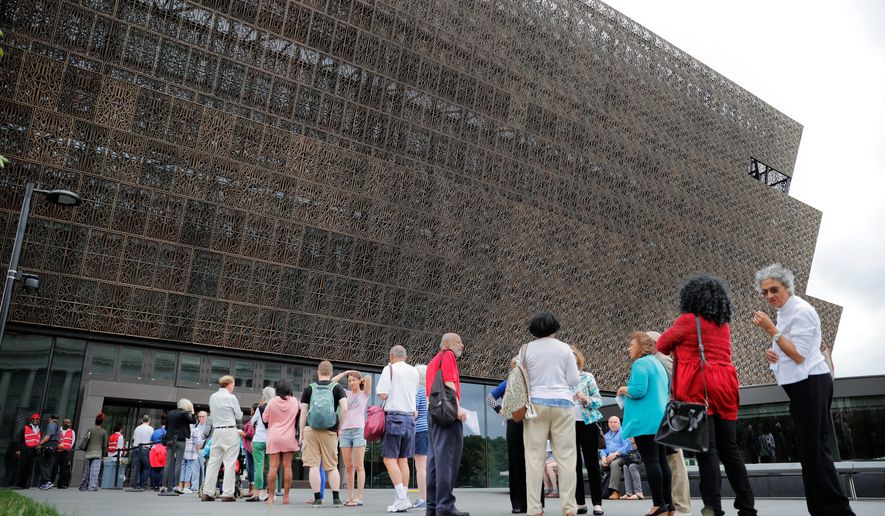The National Museum of African American History and Culture has plans to include the beloved D.C. newsman Jim Vance in its exhibitions — but there’s still no room for U.S. Supreme Court Justice Clarence Thomas.
The Smithsonian Institution previously said the absence of Justice Thomas, the second black man to sit upon the highest court in the land, could not be rectified because exhibition content is determined by “themes, not individuals.”
The museum’s founding director, Lonnie Bunch, apparently didn’t get the memo.
In an interview with NBC Washington that aired Tuesday, he said Mr. Vance, who died Saturday after a brief bout with cancer, will have a spot in the museum.
“You want people to be able to see how he moved, how he thought, how he engaged the camera, how he engaged the public and how he laughed,” Mr. Bunch said of Mr. Vance’s forthcoming depiction in the museum. “And so in many ways, the key would be what would allow us to understand who Jim Vance was.”
A phone call and email to the Smithsonian Institution seeking comment were not returned.
Mr. Bunch did not mention a timetable for Mr. Vance’s inclusion, but said he would like to display the late journalist’s notepads and feature videos of the widely admired TV news anchor in action.
Opened in September, the African-American museum houses more than 37,000 objects in 12 exhibitions documenting the black experience from slavery to civil rights and the second election of President Barack Obama.
Although Justice Thomas is conspicuously absent, the Black Panthers, hip-hop and the Black Lives Matter movement are well represented. There’s even reference to Anita Hill, who famously accused the jurist of sexual harassment in his 1991 Senate confirmation hearing.
The Smithsonian has resisted calls to make mention of Justice Thomas from Congress and legal experts who attest to his influence on the court.
In December Sen. John Cornyn of Texas introduced a resolution asking the museum to recognize the “historical importance” of Justice Thomas. A corresponding House version was introduced by Rep. Earl L. “Buddy” Carter of Georgia and Rep. Pete Sessions of Texas.
“Justice Thomas’s humble beginnings, brilliant mind, and indelible contributions to American jurisprudence are nothing short of remarkable,” Mr. Cornyn said at the time. “His omission from the National Museum of African American History and Culture is troubling and reflects a disregard for the historical significance of his service to our country.”
Republicans said they were in talks at the time with the Smithsonian to rectify the omission.
Justice Thomas grew up dirt-poor in Pin Point, Georgia, ascending through Yale Law School and a federal judgeship on his way to the pinnacle of the judiciary. Defenders and detractors alike consider him one of the finest legal minds America has ever produced.
Mr. Bunch, the museum director, said it’s important to include Mr. Vance in the museum because he showed what one can accomplish through hard work, determination and a desire to help others during his 35-year broadcasting career.
“He symbolized that it was really important that America was changing,” Mr. Bunch said, “and his presence was a symbol of that change.”
Justice Thomas celebrated the 26th anniversary of his nomination to the Supreme Court this month.
• Bradford Richardson can be reached at brichardson@washingtontimes.com.




Please read our comment policy before commenting.